Adding life, colour, and texture to a room, plants purify the air, improve your mood, and even boost your immune system. If you’re not careful though, they can become unsightly wilted things that quickly die. One variety of plant that stands out for minimalists is the Schefflera. It’s low maintenance, requires moderate water, and can thrive in various conditions, giving a vibrant pop of green to your space. Here’s everything you need to know about how to care for a Schefflera plant. Plus, why it’s an excellent choice for a minimalist household and all the benefits of having plants at home.
Table of Contents
About the Schefflera aka Umbrella Plant
The dwarf umbrella tree or Schefflera, is a popular indoor plant from the Araliaceae family that is known for its distinct leaf formation. It’s native to Taiwan and South China, growing into a small tree in its natural habitat. As a houseplant, it can grow quite tall if allowed—my own Schefflera is nearly three metres high! The glossy, dark green leaves of the Schefflera radiate from a central point, giving it its umbrella-like appearance.
This plant is pretty easy to care for and thus a good choice if you’re new to houseplants. The Schefflera is very adaptable and can thrive indoors and even outdoors in milder climates. It needs to be watered regularly, but it’s trainable and I’ve found it tolerates drought conditions quite well.
The Schefflera is also relatively pest-resistant, which is another reason it’s one of the easier plants for novices. Adding a low-maintenance, vibrant green touch with its unique, umbrella-like foliage, it’s unsurprising the popularity of the Schefflera has increased over the years with its beauty, ease of care, and ability to thrive indoors. At the most basic level, you really just need to avoid overwatering and keep it in a well-lit area.
Two Species of Schefflera: Arboricola vs Actinophylla There are two different species of umbrella trees, but it's relatively easy to tell them apart. Size: Arboricola is more compact, reaching 6-8 feet indoors, while Actinophylla can grow up to 15 feet indoors, and even taller outdoors. Leaf Appearance: Arboricola has smaller, darker leaves, whereas Actinophylla can have lighter or variegated leaves. Flowering: Actinophylla often flowers in tropical climates, producing large, compound umbels. In contrast, Arboricola rarely flowers, especially when it's kept indoors. Light Tolerance: Arboricola can manage in low light conditions, while Actinophylla thrives in bright, indirect light. These differences make Arboricola more suitable for indoor gardening, while Actinophylla is preferred for outdoor landscaping in warm climates. This plant care guide focuses on Arboricolas because they're more common in households.
Why Choose a Schefflera for Your Home
Plants are not just aesthetically pleasing; they offer numerous benefits for your home. They help purify the air, increase humidity, and can even help reduce noise levels. Plants have been shown to boost mood, concentration, and memory while reducing stress levels and promoting relaxation. They can even improve your work life.

With its distinctive umbrella-shaped foliage, a Schefflera also embodies the essence of minimalistic design with its simple, clean lines. This is a plant that doesn’t clamor for attention but instead brings a quiet, steadfast beauty to any space.
Its lush, graphical, oval leaves that grow in their characteristic shape make your space look fresh yet uncluttered, so it’s a perfect choice for those who prefer a subtle, understated aesthetic. And because they can grow to impressive heights indoors, they’re great for filling empty corners in high-ceilinged rooms.
The benefits of the Schefflera go beyond its visual appeal, however. Owning and caring for plants aligns seamlessly with the principles of intentional living. It reminds us of the importance of nurturing and patience, and it’s deeply gratifying witnessing the growth of a living thing you’ve cared for.
In addition, by acting as a natural mood enhancer, the Schefflera supports a lifestyle that is not only minimalistic but also mindful, contributing positively to your holistic well-being. Its mere presence serves as a calming reminder of our connection to nature, and the tranquility it brings perfectly complements a minimalist, intentional living space.
The Role of Schefflera in Purifying Indoor Air
Scheffleras are known for their air-purifying properties, which can help improve the air quality of your home. They absorb toxins from the air, including formaldehyde and benzene, making them an excellent natural air purifier. At the same time, they release oxygen back into your room.
In addition to eliminating harmful gases and pollutants, plants also help improve air quality by increasing humidity levels. This is notable, as healthy humidity levels prevent the spread of viruses and bacteria.

The Basics of How to Care for a Schefflera Plant
Caring for this delightful plant hinges on three main aspects: sunlight, watering, and soil composition. Understanding and balancing these three pillars is akin to cracking a code that unlocks a world of lush, vibrant growth for your Schefflera.
From decoding the lighting preferences of this plant, to mastering its watering rhythm, and deciphering the soil and fertilizer blend it thrives in, each element of care is vital to a healthy plant. In the following sections, I’ll guide you through these steps so you can cultivate not just a thriving Schefflera plant, but also a deeper appreciation for the enriching process of plant care in general.
From Water to Light: Understanding Your Schefflera’s Needs
When it comes to successful Schefflera care, it all boils down to understanding the plant’s intrinsic needs. A grasp of its watering and lighting requirements is essential for its growth and survival.
Let’s start with natural light. Schefflera plants are natives of the bright, tropical rainforests. However, they are quite adaptable and can survive in lower light situations. This doesn’t mean that they’ll thrive in any light condition, though. Medium light plants like the Schefflera prefer bright, indirect light. Too much direct sun can scorch the leaves, causing them to turn yellow and eventually drop off. However, too little light will result in leggy growth as your plant reaches out for more sun. A north or east-facing window is generally a suitable location.
I keep my own umbrella tree on the south side of my condo, but it’s in between windows. This way it gets a great deal of bright light all day long, but avoids the scorching direct southward sunlight.
We can’t talk about how to care for a Schefflera plant without mentioning H2O. Watering can be a tricky business with Scheffleras as they have a strong distaste for overwatering. They prefer to wait until the soil is slightly dry before they’re next watering. This means it’s better to err on the side of underwatering rather than risk root rot.
Typically, watering your Schefflera once a week will suffice, but this can vary depending on the humidity, temperature, and light exposure in your home.
In my experience, I’ve found this plant easy to train. My Schefflera is about 17 years old and because I used to travel heavily for work, I trained it to go without water for up to three weeks. Training takes some time, however, and I do not recommend it for beginners.
You’ll generally want to water your plant more during the warmer months of spring and summer, and it may also benefit from being moved outside if temperatures allow. It’s a good practice to check the soil’s moisture level at least 1 to 2 inches deep. If it’s dry, it’s time to water. If not, wait a bit longer.
Creating the perfect environment for your Schefflera involves striking a balance between medium light and water. Paying close attention to its needs and behaviours will ensure your plant thrives, enriching your space with its tropical, minimalist appeal. As with any plant, practice and experience will help you become proficient at interpreting its signals, whether it’s wilting leaves signaling overwatering or a lack of growth indicating inadequate light.
Perfect Soil and Potting for Your Schefflera

When it comes to Schefflera 101, the importance of proper soil and potting can’t be overstated. Even if you’ve mastered the sunlight and watering aspects of this tropical plant, a misstep in soil selection or potting could lead to plant problems.
Your Schefflera is easy to grow, but it does have some specific requirements. It thrives in well-draining soil which prevents water from accumulating at the bottom of the pot, a situation that can lead to rotting roots. An ordinary peat-based potting mix is usually sufficient for your plant. But, adding perlite or coarse sand can improve drainage and aeration. Be sure to allow the top inch of soil to dry between waterings.
The right pot is equally critical for your Schefflera’s health. A pot with adequate drainage holes is a must. After watering your plant, excess water should easily escape, ensuring the soil in the pot dries suitably. A common mistake is choosing a pot too large for the plant. The ideal pot size should allow the plant to fill it out without too much spare room. Remember, when you’re handling the plant to repot it, be gentle to avoid damaging the plant’s leaf and stem structure.
If you’re fortunate enough to live in a warmer climate, your Schefflera can be grown outdoors. Still, it prefers bright but indirect light as direct sun can burn the leaves. For those growing Schefflera indoors, placing the plant near a source of enough light should suffice.
Over time, your Schefflera may start to grow quite large and possibly even lose its balance. To avoid this, and to maintain an aesthetically pleasing shape, you’ll want to prune your tree.
Schefflera houseplants rebound quickly from pruning though, so you might need to do it semi-regularly to maintain a compact, desirable shape.
The Fertilizer Factor: How to Feed Schefflera
The path to understanding how to care for Schefflera becomes clearer once you also grasp the importance of the right fertilizer. Similar to humans, your houseplant thrives when fed a balanced diet.
The most common type in homes, the Arboricola, doesn’t really require heavy feeding. These tropical plants are quite resilient and can do well even when the nutrients are less than optimal. However, using the right fertilizer at the right time can reward you with a particularly vibrant and thriving plant.
Your Schefflera plant care regimen should thus also include feeding it a balanced, water-soluble fertilizer. This should be given roughly once a month during the growing season – spring through early fall. Winter feeding isn’t typically necessary as the plant is in its resting phase and doesn’t grow much.
One thing to remember is that fertilizing should always follow watering. This prevents the fertilizer from burning the plant’s roots. If you notice the leaves of your Schefflera turning yellow and falling off the plant, it could be a sign of over-fertilization.
If you’re new to all this, don’t worry! Scheffleras tend to rebound quickly from minor care mistakes. Simply cut back on the amount of fertilizer and ensure you are watering correctly.
Whether grown outdoors in the spring or kept inside near a source of bright but indirect light, your Schefflera can grow into a lush, mature plant like mine with the right amount of attention.
Following these care instructions and adjusting your routine as needed will keep your potted plant thriving, maintaining its aesthetic appeal and its air-purifying benefits.
Troubleshooting Common Issues
Now that we’ve covered the main aspects of how to look after a Schefflera, let’s tackle some of the potential challenges you might face. Even the most nurtured Schefflera can develop issues like yellow leaves or a pesky pest infestation.
While Schefflera houseplants usually recover quickly from minor setbacks, persistent problems can hamper their growth and overall health. The key to troubleshooting is early detection and correct action. Let’s have a look at the Schefflera’s most common problems to ensure it thrives through spring, summer, and beyond.
Leaf Drop Pitfalls: Overwatering, Underwatering and Cold Drafts
Schefflera plants are generally easy to grow, but leaf drop is a common issue that can be caused by a variety of factors. It’s a clear sign that your plant is unhappy and wants some extra TLC.
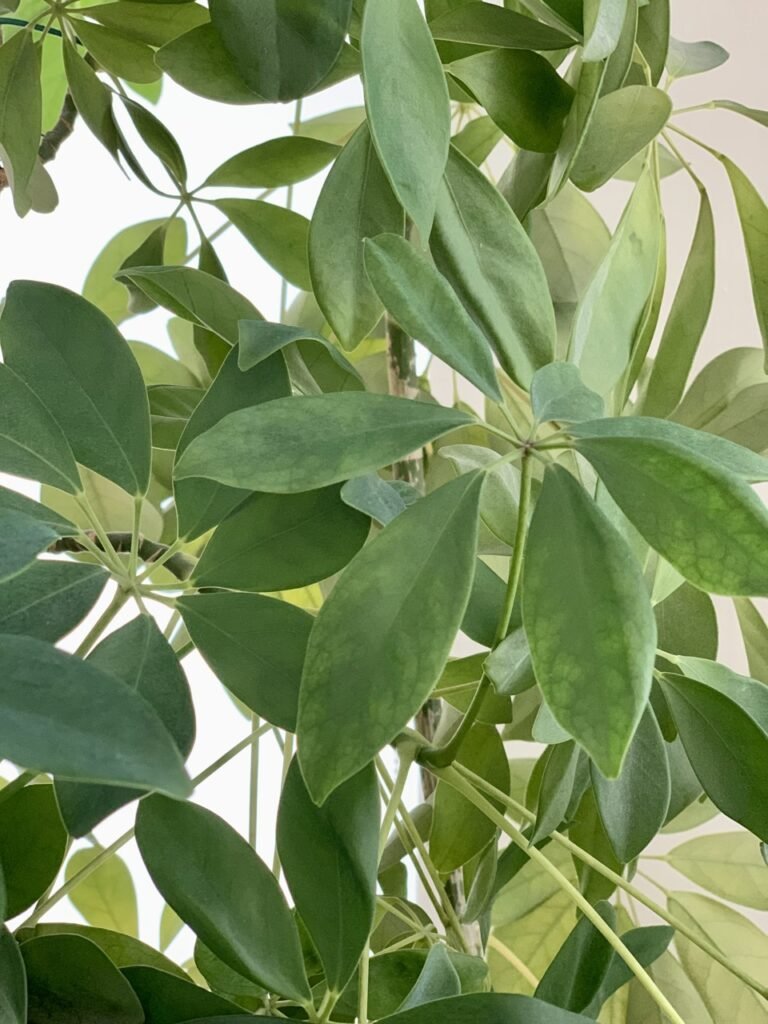
Overwatering is one of the most common reasons for leaf drop in Schefflera. This plant prefers its soil to dry out slightly between watering, so if you give your plant too much water, or if you soak the soil without allowing proper drainage, you could cause the roots to rot. This leads to an unhappy plant that may start shedding leaves.
If you notice yellowing leaves or a wilting appearance, consider whether you might be watering too much. Always wait until the top inch of soil is dry before watering again, and ensure water can drain freely from the bottom of the pot.
Conversely, underwatering your Schefflera can also lead to leaf drop. If the soil in the pot dries out completely for too long, your plant will start to stress, and this can cause leaves to fall off. Remember that Schefflera are tropical plants so they enjoy moisture.
Finally, cold drafts can also lead to leaf drop. Scheffleras are tropical plants that thrive in warm conditions. So if they’re placed in an area with a draft, especially a cold one, they may likely respond by dropping leaves. A sudden temperature drop can shock the plant, so try to keep your Schefflera in a spot with consistent, warm temperatures away from drafts or vents.
By understanding these pitfalls and managing them proactively, you’ll be well on your way to ensuring your Schefflera stays healthy and lush. This is all part of learning how to care for a Schefflera plant. Remember, plants don’t like sudden changes. Patience and consistency are the key to keeping them happy.
Schefflera Arboricola Plant Diseases & Pests
While Schefflera plants are generally hardy and resistant to many diseases and pests, they are not immune. Proper maintenance can prevent many issues, but sometimes, despite your best efforts, problems can occur.
The most common diseases that can affect your Schefflera are root rot, leaf spot, and powdery mildew. Overwatering or poor drainage commonly lead to root rot; the symptoms include wilted leaves and a sickly appearance. If your plant suffers from rotting roots, you may need to remove the plant from its pot, cut away the affected roots, and replant it in fresh soil.
Leaf spot and powdery mildew are fungal diseases. Leaf spots show up as brown or black spots on the leaves and may result in leaf drop if left unchecked. Powdery mildew appears as a white, powdery substance on the leaves. Both diseases thrive in high-humidity environments and can be controlled by reducing humidity around the plant and removing affected leaves.
When it comes to pests, the most common culprits are spider mites, mealybugs, and scale insects. Spider mites are tiny creatures that can cause leaf discolouration and drop. They typically appear when the plant is stressed, often due to under-watering. Mealybugs and scale insects suck sap from the plant, causing stunted growth and yellowing leaves.
If you notice signs of an infestation, isolate your plant immediately to prevent the pests from spreading to your other green friends. To rid your plant of the intruders, use a soft cloth dipped in a solution of mild dish soap and water and gently wipe the leaves and stems. For severe infestations, you may need to spray a targeted insecticidal soap or neem oil spray onto the plant.
I’ve been through two big infestations of my own umbrella tree over the years. Both instances were annoying, but manageable, and I proceeded exactly as above with success.
By keeping a close eye on your Schefflera and acting quickly at the first sign of trouble, you can keep most diseases and pests at bay, ensuring your plant thrives for years to come. It’s also good to remember prevention is always better than cure. So tend to your plant regularly to avoid these issues in the first place.
Schefflera and Safety: Managing Plant Toxicity
As beautiful and beneficial as Schefflera plants are, it’s important to note that they are indeed toxic if ingested by humans and pets. The plant contains calcium oxalate crystals that can cause irritation to the mouth, skin, and eyes. If ingested, it can lead to symptoms like drooling, difficulty swallowing, and vomiting.
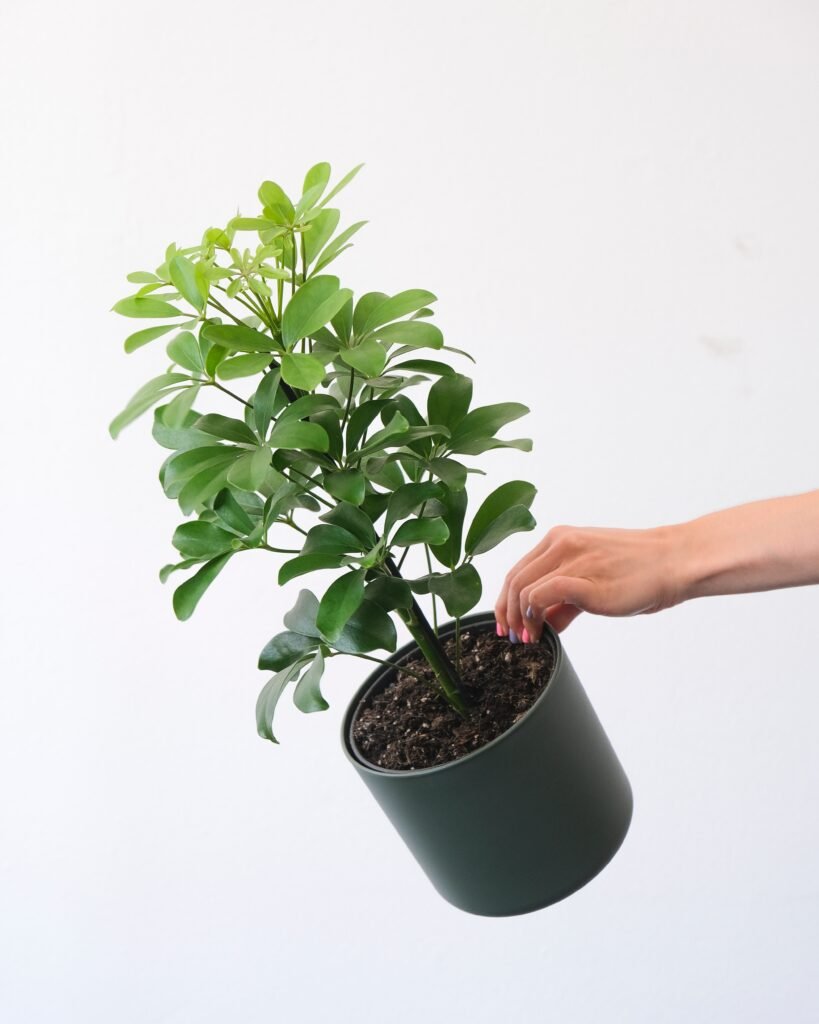
While it’s rare for adults to ingest plant leaves, kids and pets can be naturally curious and may attempt to chew on your Schefflera. If you have young children or pets that like to explore their surroundings, it’s advisable to place your tree in a location that’s out of their reach.
Moreover, when handling the plant for pruning or repotting, it’s recommended to wear gloves as a precautionary measure to avoid any skin irritation. If you or a family member happen to ingest part of the plant or experience any symptoms after handling it, seek medical attention immediately.
In short, while Schefflera is a delightful addition to any home or office, it’s important to handle the plant with caution, keeping its toxicity in mind.
Umbrella Plant Care: Key Takeaways
The presence of a Schefflera, with its unusual foliage and minimalist appeal, can significantly enhance your mood and the ambiance of your home. It’s not just an ordinary houseplant; it’s a statement of living intentionally, a nod to a mindful lifestyle that values simplicity and harmony with nature.
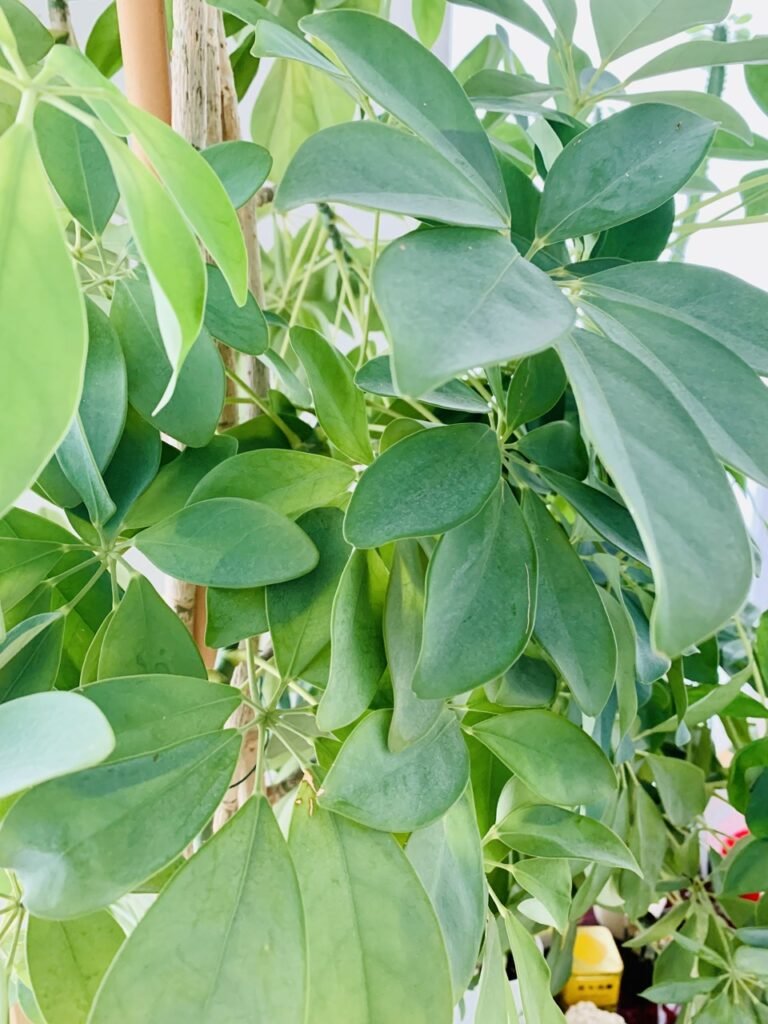
The beauty of Schefflera lies not only in its aesthetics, but also in its relative ease of care. With a bit of knowledge and attention, you can watch it flourish and grow tall. From understanding its sunlight and watering needs, to choosing the perfect soil and pot, and not forgetting the importance of the right feeding schedule, caring for your Schefflera can be a fulfilling journey in itself.
However, it’s essential to remember that not all journeys are without obstacles. From leaf drop pitfalls due to overwatering, underwatering, or cold drafts, to the possible threats of pests and diseases, troubleshooting Scheffleras might require a little bit of patience but with this simple guide, you should be well equipped to navigate these common issues.
While Schefflera is indeed a delightful addition to your home or office, keep in mind that it’s mildly toxic if you have children or pets. Handle the plant with care, and keep it out of reach from the curious hands and paws.
In conclusion, caring for a Schefflera is more than just maintaining a plant. It’s about enriching your living space, engaging with nature, and, ultimately, cultivating a piece of the tropical wilderness within your own home. Embrace the Schefflera care journey, and watch as your plant thrives and your home transforms.
FAQ
While it can vary depending on your specific conditions, generally you should wait until the top inch of soil is dry before watering your Schefflera.
Schefflera plants can be grown outdoors year-round in regions where the average annual minimum winter temperature stays above -1 to 10°C. This is the equivalent of USDA Plant Hardiness Zones 10–12. In colder climates, they are best kept as indoor houseplants.
Schefflera plants prefer bright but indirect light. They can tolerate medium light but growth may be slower.
Yellow leaves can indicate overwatering or insufficient light. Ensure your plant is getting the right amount of water and is placed in an area with appropriate lighting.
Yes, Schefflera can be toxic to pets if ingested. It’s best to keep these plants out of reach of curious pets.
Fertilize your Schefflera during the growing season of spring and summer, reducing to once every two months in fall and winter.
Schefflera Arboricola, or the dwarf umbrella tree, is smaller and more common as a houseplant. Schefflera Actinophylla, or the umbrella tree, is larger and has a more tree-like structure.
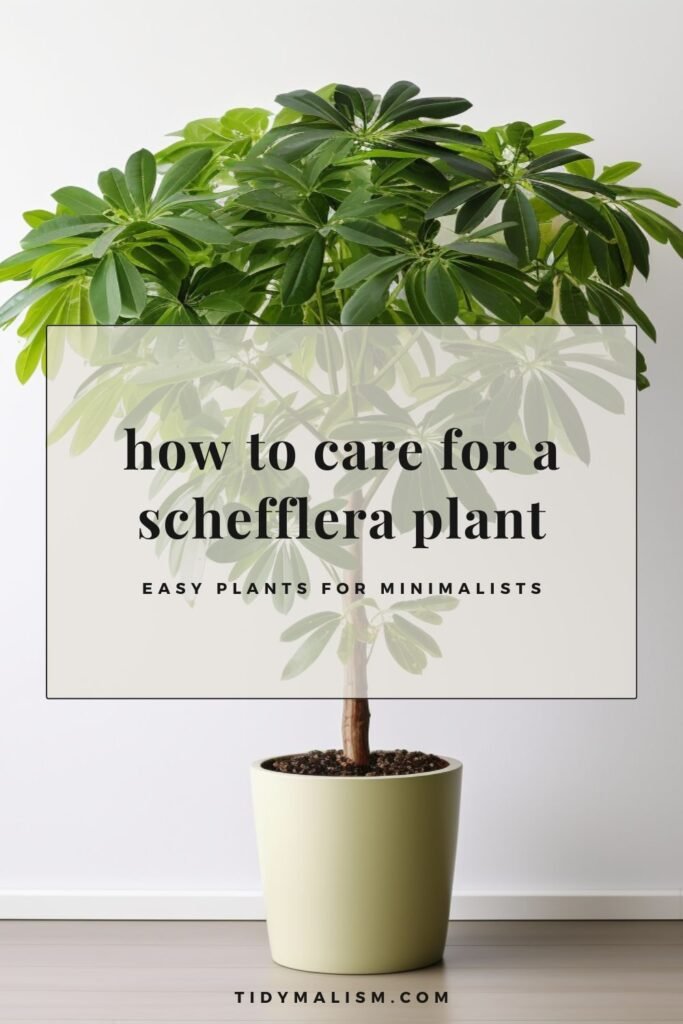



















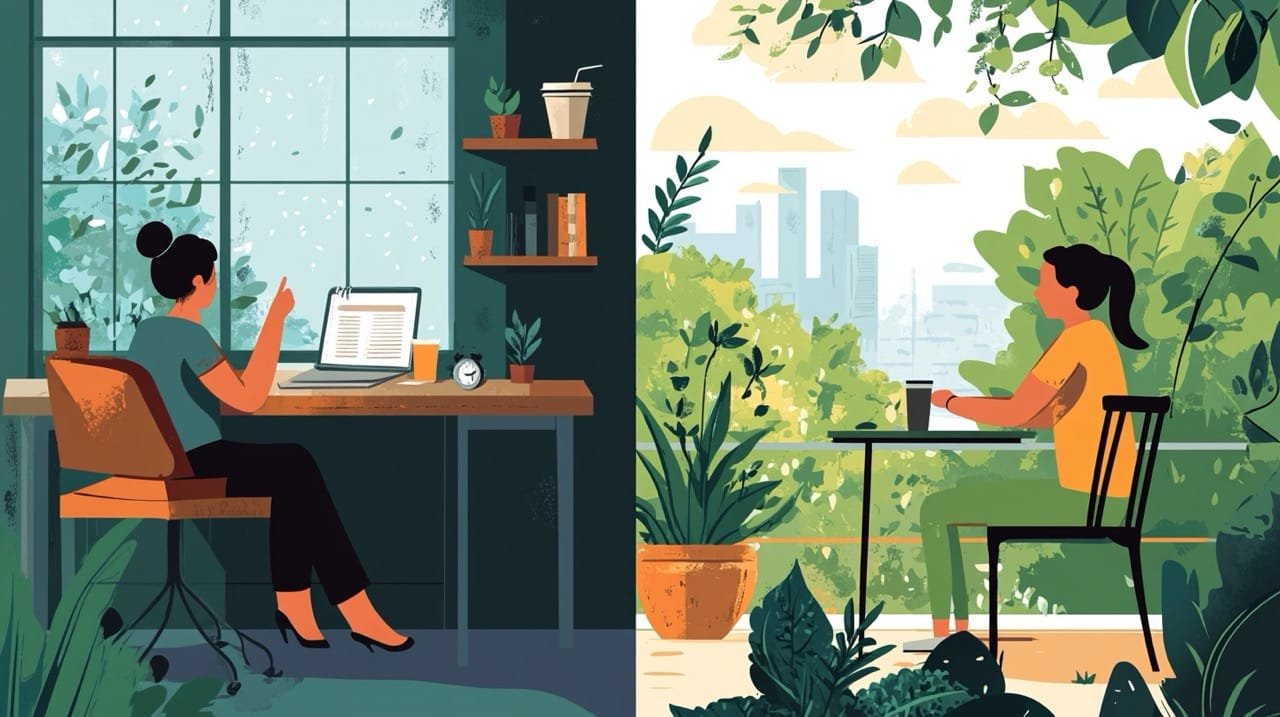

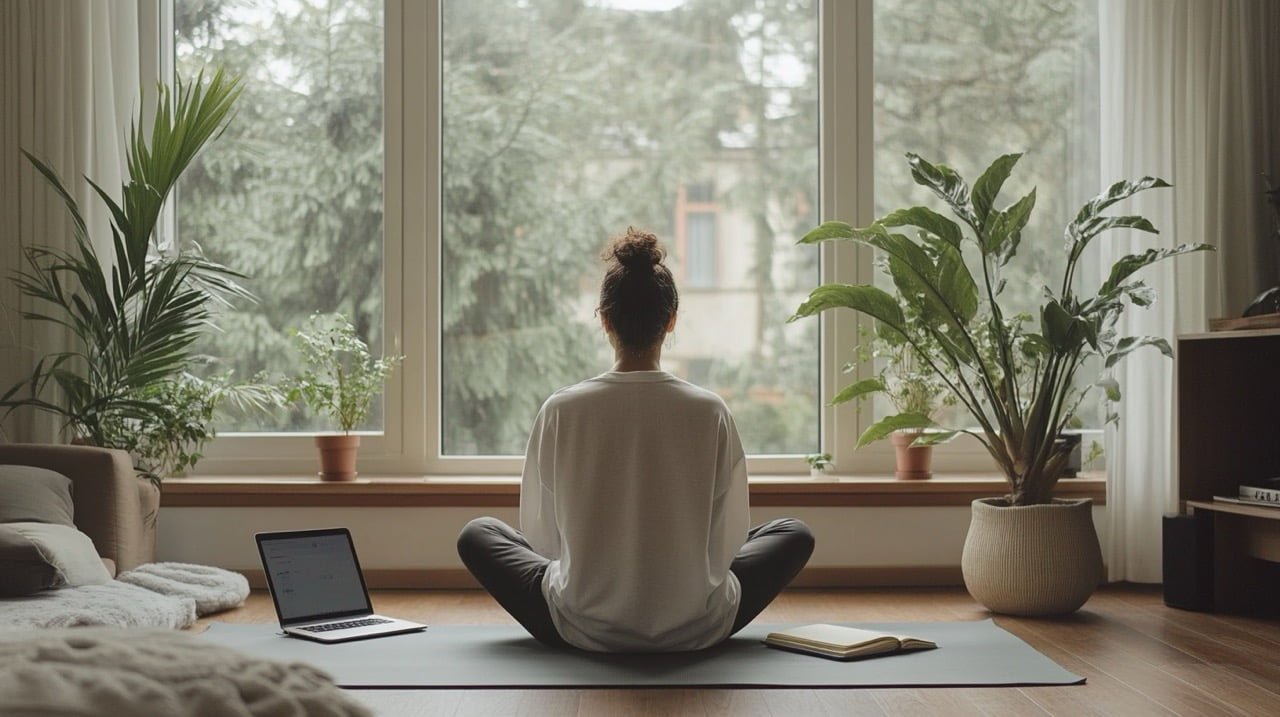
Leave a Reply